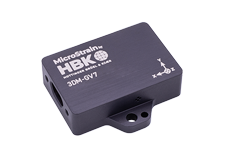Recent
-
-
MicroStrain by HBK at XPONENTIAL 2024
May 7, 2024 / Inertial
-
-
-
Introducing Version 4.0.0 of the MicroStrain ROS Driver
Jan 29, 2024 /
-
-
-
Enhancing Vision-Based Robots with IMUs
Dec 19, 2023 /
-
Smart Beer? Queen City Brewery Uses Wireless Sensors to Make a Better, Smarter Beer
- By Beth /
- Published Mon, 01/22/2018 - 11:44
After working as a research scientist in a lab for nearly 25 years, Paul Hale combined his love of chemistry and biology and his beer-making hobby to open Queen City Brewery about three years ago.
He went from experimenting with making several types of home brews in his basement to attempting to emulate classic European-style beers with a distinct fresh taste at his Burlington, Vt. Brewery. To achieve what Queen City Brewery calls, “World-class beer without the jet lag,” each brew has to be individually temperature controlled during the fermentation process.
“Temperature fluctuations during the week-long fermentation process can completely change the flavor and style of beer,” said Hale. “For example, a beer that is fermented at 50 degrees Fahrenheit will completely change characteristics and even end up with a taste different than planned if the temperature spikes up even 15 degrees.”
As such, Hale realized that he needed a way to constantly monitor temperatures during the fermentation process and the cooling system itself. He came up with the idea to put a temperature sensor in the cooling system to give him a better idea of how the system is reacting to the load being placed on it and whether it is malfunctioning.
The solution came in the form of real-time monitoring with the LORD wireless sensors. These sensors provide email alerts when a threshold is exceeded, such as elevated temperatures of the fermenters. This aids Hale in ensuring the beer remains at the desired temperature. Hale can even monitor the temperatures using the app on his cell phone, and he notes that these alerts have saved entire batches of beer that would have otherwise been discarded.
In addition to saving batches and creating a better end product, the long-term data analysis gathered from the sensors allows Hale to better understand and evaluate the brewing process, such as examining the information to determine what happened during a particular fermentation that may have caused beer to become off-flavor. The tools – sensors, wireless communication, system configuration, local and cloud-based user interface – are high-value, quick to setup, and are easy to operate by the end user. For a high-quality brewery with exacting standards, maintaining the desired quality of its beer is a top priority. Taking advantage of wireless sensors to protect its investment makes sense, so the real question is, “Why NOT do it?”
Watch the video below to learn more about how Queen City Brewery is using wireless sensors to brew better beer.










